Samsung Galaxy S 2 (International) Review - The Best, Redefined
by Brian Klug & Anand Lal Shimpi on September 11, 2011 11:06 AM EST- Posted in
- Smartphones
- Samsung
- Galaxy S II
- Exynos
- Mobile
SGS2 Intro
The road to our Galaxy S2 review has been a long one. The first time we saw the device was at Mobile World Congress, where it was initially announced. There, Anand and myself played with and hurriedly benchmarked one and came away more than a bit disappointed with performance. I set my expectations based on our initial experience and came away from the conference prepared to be underwhelmed when the device launched internationally and stateside. There was never any doubt in my mind that the device would be a runaway success just like the first one, but I still came away disappointed.
Boy was I wrong. The device that launched internationally is completely different, in the positive sense.
It took a long time for us to get an international Galaxy S 2 in our hands, but we finally got one, and for the past few weeks I’ve been using it as my primary device here in the US on AT&T. It’s not an exaggeration at all to say that we’ve received more requests for a Samsung Galaxy S 2 (henceforth SGS2) review than any other smartphone, by at least an order of magnitude. The tomes of information already written about this phone has made it all the more daunting to dive head-first into a comprehensive exploration of the device, and we’ve tried to do our best.
Physical Impressions
First things first, how does the phone feel? I keep going back to MWC because that’s when first impressions were made, and thankfully in-hand feel didn’t change at all since then. The SGS2’s back eschews the plasticky smooth back of the previous SGS, and instead includes a textured battery door which snaps on. The new battery cover doesn’t wrap around to the front, instead only snapping into the back. There’s a notch in the top right which you can get a thumbnail into and pry the battery cover off with.
Moving to a textured surface instead of the SGS’ oft-derided slick plastic back gives the device a much needed boost of in-hand-feel. When I first encountered the phone at MWC I was shocked how much of a difference this simple change made. The edges are still lipped in smooth glossy plastic, but on the whole the device feels much more competent than SGS1. It appears to be the same material, but now there’s much less of a propensity for scratching or slipping around. I feel like the design language of the original SGS is still here, but it’s all grown up.
It’s impossible to go any further without noting just how thin the SGS2 is. Samsung has taken something of an obsession with holding the thickness crowns for its products, something the SGS2 did indeed hold for some time, at 8.49 mm at its thinnest point. Like the other SGS phones, there’s a bulge at the very bottom which throws a bit of a wrench into the device being completely uniform in profile. It is here that Samsung also locates antennas and the loudspeaker, though the real purpose for this bulge seems to be at least somewhat ergonomic. This bulge is around 10.1 mm thick, which is 1.61 mm thicker than the rest of the phone. For comparison, the old SGS was around 10.0 mm thick all over. As a result, the SGS2 is on the whole noticeably thinner, all while dramatically increasing power and features which we’ll get to in a moment.
Next up is the relocation of the microUSB port. The original SGS’ microUSB port placement drew a lot of discussion, as it’s at top left and behind a small door on the international variant and most regional variants. The SGS2 however relocates the microUSB port to dead center of the bottom face of the device, and just right of it is the primary microphone port. I got used to seeing the microUSB port up top and understood that choice, but having things at the bottom just feels more natural.
The volume rocker and power button are placed basically in the same position on SGS2 as the previous generation. Power is on the right about three quarters of the way up the right side of the device, and volume on the left side positioned with the top of the volume rocker in-line with the top of the power button. Thankfully these buttons are communicative and clicky as ever, I can’t find any fault with them.
There’s a notch which looks like the slot for a hand strap just above the volume rocker. There’s no microphone attached on the inside to this area, so it’s a bit unclear to me what this is for if it isn’t for a hand strap.
At top is another microphone port for both noise cancellation during calls using a discrete solution by Audience. Right next to it is the standard 3.5mm headphone jack.
The front of SGS2 is one unbroken glass surface, just like you’d expect for a top-tier smartphone launching this generation. Starting at the top is the 2 MP front facing camera, and right next to it is the proximity sensor and ambient light sensor. Of course, the real centerpiece is the 4.3" WVGA Super AMOLED+ display (henceforth SAMOLED+) which we’ll talk more about in a moment.


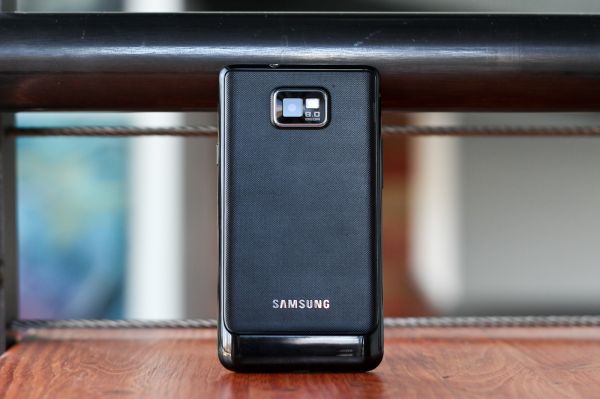

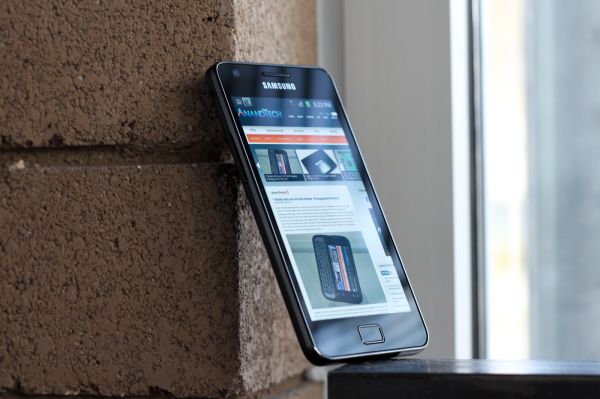
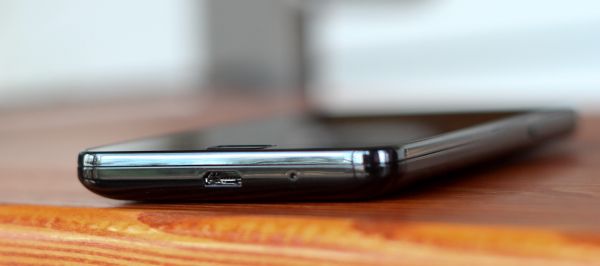
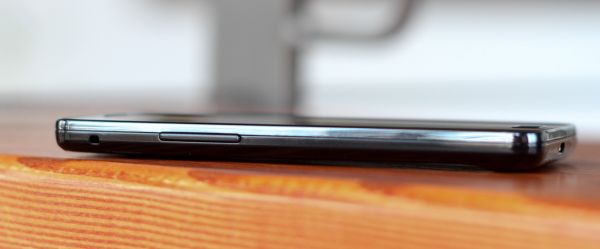
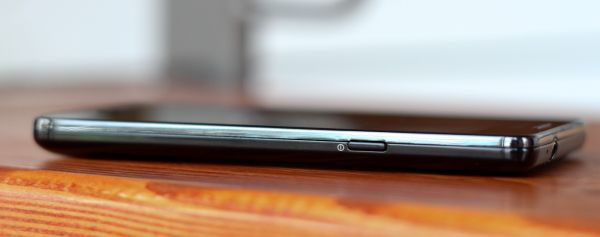
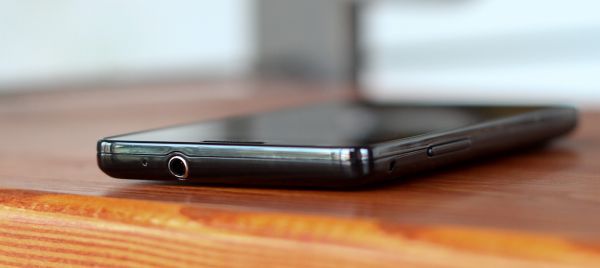
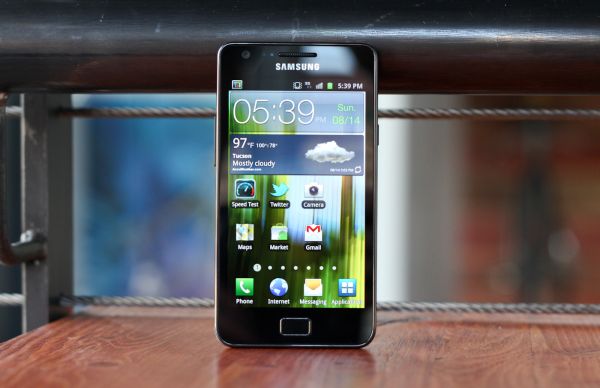








132 Comments
View All Comments
shamalh108 - Monday, September 12, 2011 - link
Thanks alot, going to do that today, however if you read my post above im not sure its an individual app causing it. Maybe i should root so i can wipe the battery stats and recalibrate, besides that im also going to purchase the offical extended battery from samsung, i dont mind losing slight slimness:)ph00ny - Monday, September 12, 2011 - link
I didn't even bother with rooting for a month or two until i wanted to try out chainfire plugins. Even in stock form, battery life was great. certainly better than my captivate.One thing to understand about SAMOLED screen is that it uses 0 power on black pixel and more power on white pixels. So maybe try out a darker themed wall paper and also check to see if you have widgets that have tendency to use up more juice than an alternative
Also for an example, samsung's stock music app uses roughly half of Google's music app power consumption. It gets worse with spotify (offline mode of course)
Remeniz - Monday, September 12, 2011 - link
The trick is to adjust the power saving features to suit and make sure very little is going on in the back ground. I only run GPS if I need too and the WiFi gets turned off when i'm out and about, unless I know i'm in a WiFi zone and want to browse the www.I get at least a days use out of my SGS2.
supercurio - Monday, September 12, 2011 - link
Note:"When idle, processor goes back to 200 MHz"
Idle - screen on or an using a wakelock to keep the device on its the case.
Otherwise the whole CPU is turned literally OFF − everything frozen in RAM.
And in this situation, the baseband, Wi-fi chip or an external timer will wake up the CPU and restore Linux kernel in a working state when needed, like if you received a new mail, or a phone call.
I precise that because most people believe the CPU stays ON all the time but it's the opposite, with standard usage, the CPU is ON only a fraction of the day.
Lucian Armasu - Sunday, September 11, 2011 - link
Brian, I don't think it's fair to compare the "tablet" version of A5 with the "smartphone" version of the Exynos and all the other chips. Even Nvidia's Tegra 2 has either 50% or 100% higher clock frequency for its GPU in the tablets, compared to the one in smartphones.It's very likely that all tablet chips are more powerful than the smartphones ones, and for all we know the iPhone 5 GPU will only one 1 GPU core instead of 2 like in the iPad 2, or they'll be clocked at a lower frequency.
I know you'll review the iPhone 5, too, but I think you're setting a too low expectation for the Exynos and the others compared to the "A5 chip". You know what I mean? You should've at least thrown a Xoom or a Transformer in there to see how it fairs against the Tegra 2 phones.
I hope at least you'll correct this in future reviews. Great review otherwise, though.
privater - Sunday, September 11, 2011 - link
An iPad 2 can run sun spider 0.9 with 1980 score (4.3.5)If the Exynos is superior on every aspect of A5, the result is difficult for me to understand.
Lucian Armasu - Sunday, September 11, 2011 - link
Just as I mentioned above, it's not fair to compare the tablet versions with the phone versions of the chips. All the latest smartphones get around 4000 in the Sun Spider test, but all tablets get around 2000 in that test, so even on the CPU side, it's still not a fair comparison.Mike1111 - Sunday, September 11, 2011 - link
Great review!But why are you so late with the review of the INTERNATIONAL version? I mean I would get it if you decided to wait for the US versions, but waiting almost 4 1/2 months and then publish a review of the international version only a week before the US versions get released? Seems strange to me...
ph00ny - Sunday, September 11, 2011 - link
Brian said in the other reviews comment sections that he was waiting to get ahold of a review unit. I did offer mine if he was nearby but he's nearly on the west coast and i live in the opposite side of the countryshamalh108 - Sunday, September 11, 2011 - link
Another pity is that even games from gameloft which are supposed to be adapted to the SGS2 cause significant heating of the phone.. for example the Asphalt 6 available for free in Samsung Apps .. it would be great if more games were coded to make better use of the SGS2 gpu ...